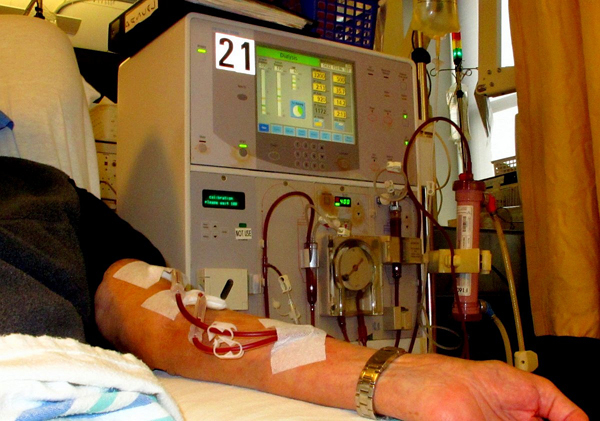Many medications have varied effects on the vital organs, with some having severely toxic effects on the kidneys. For doctors, it isn’t always easy to predict how the drugs might affect the health of the kidneys, especially for those in the intensive care unit (ICU).
In order to allow healthcare providers to quickly and reliably determine how a specific drug will be metabolized by the kidneys, researchers at the University of Michigan have developed a kidney-on-a-chip device, designed to mimic the response of the organ in vitro. The small microfluidic device could help doctors prevent kidney damage in at-risk patients.
The kidneys play an important role in waste management, mineral balance, and regulating fluids. If kidney function is compromised as a result of drug toxicity, it can have systemic effects on the overall health of the patient.
It’s estimated that over 60 percent of patients in the ICU experience kidney damage to some extent, with 20 percent of these cases resulting from drug toxicity. As kidney toxicity is dependent on a number of patient-specific factors – including age, current medications, and comorbidities – deciding on the best dose to minimize risk can be difficult.
The microfluidic kidney-on-a-chip device consists of a permeable membrane and a layer of cultured human kidney cells, housed between two parallel compartments. The researchers hope that by simulating the environment inside the kidney, healthcare providers will have a better tool to predict drug toxicity in patients.
“When you administer a drug, its concentration goes up quickly and it’s gradually filtered out as it flows through the kidneys,” said Professor Shuichi Takayama, of the University of Michigan’s biomedical engineering department. “A kidney-on-a-chip enables us to simulate that filtering process, providing a much more accurate way to study how medications behave in the body.”
In order to test the abilities of the kidney-on-a-chip, the researchers used two different drug delivery methods to apply the common antibiotic, gentamicin, to the cells in the device. By comparing two unique methods of drug infusion, the research team hoped to predict the potential effects on the kidney.
The first drug delivery method used a high concentration of the antibiotic that quickly decreased, simulating the act of administering a drug on a daily basis. The second method used a lower concentration that was slowly released over time, mimicking a prolonged drug infusion.
Following these experiments, the researchers removed the kidney cells from the device in order to determine whether they were damaged by the treatment. Despite the fact that the same volume of drug was used in both cases, the researchers found that the once-daily infusion was less damaging to the kidneys compared to the continuous, slow infusion.
“Even the same dose of the same drug can have very different effects on the kidneys and other organs, depending on how it’s administered,” said Assistant Professor Sejoong Kim of Korea’s Seoul National University Bundang Hospital. “This device provides a uniform, inexpensive way to capture data that more accurately reflects actual human patients.”
The researchers hope to further improve the device in the future, to allow it to provide real-time feedback on how a drug is metabolized. If the device is eventually approved, it could help to reduce kidney damage in patients in the ICU.












Join or login to leave a comment
JOIN LOGIN